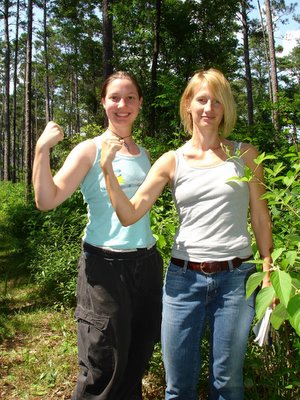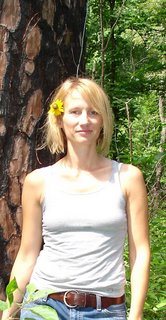 trail runs through the Sam Houston National Forest and at over 120 miles is the longest contiguous hiking trail in Texas. Much of it runs through red-cockaded woodpecker habitat (a federally endangered species), and the USFS manages the forest to maintain open park-like stands of pine with little mid-story, but some runs through the Lake Creek Wilderness Area that opened my eyes to an astounding fact: most of the Sam Houston NF area that I saw not have downed, rotting logs. When you see them all over the forest, you realize this is the way a forest should look. When I grew up in the woods of Oregon the moss-covered soft red rotting logs were part and parcel of the ecosystem - mushrooms, small mammals, reptiles, insects all use these logs - and they are integral to its beauty.
trail runs through the Sam Houston National Forest and at over 120 miles is the longest contiguous hiking trail in Texas. Much of it runs through red-cockaded woodpecker habitat (a federally endangered species), and the USFS manages the forest to maintain open park-like stands of pine with little mid-story, but some runs through the Lake Creek Wilderness Area that opened my eyes to an astounding fact: most of the Sam Houston NF area that I saw not have downed, rotting logs. When you see them all over the forest, you realize this is the way a forest should look. When I grew up in the woods of Oregon the moss-covered soft red rotting logs were part and parcel of the ecosystem - mushrooms, small mammals, reptiles, insects all use these logs - and they are integral to its beauty.The ironic and interesting thing is that the Lake Creek Wilderness area suffered an infestation of pine bark beetles 10 years ago, and everyone thought they devastated the forest. A mere ten years later, those logs from the pines killed by the pine bark beetles now make the wilderness area the most aesthetically pleasing part of the National Forest and presumably create far more
 structure for wildlife than the stands managed only for endangered red-cockaded woodpeckers. This has been debated for US Forest Service biologists and is the subject of lawsuits... I claim no personal expertise but can say the actual designated Wilderness Area is incredibly beautiful and the rotting logs add beautiful topography to the landscape.
structure for wildlife than the stands managed only for endangered red-cockaded woodpeckers. This has been debated for US Forest Service biologists and is the subject of lawsuits... I claim no personal expertise but can say the actual designated Wilderness Area is incredibly beautiful and the rotting logs add beautiful topography to the landscape.Even the part of the trail we walked that wasn't in the Wilderness Area was beautiful. I just love getting outside - no matter the heat, I love to walk in the woods and observe and explore. The national forests go on for thousands of acres around Houston, across streams and over hillsides. They are adapted to historic fire and so forest managers do prescribed burns. You can see on this photo of a large tree evidence of a burn - the tree survives just fine. Brandt's "theory" is that most people don't know what a big tree is - they see a medium-sized pine and think its a big tree. Its because most of the really big trees are gone. However you see a tree like the one in the photo and you realize prior to logging in the late 1800s, most pines used to grow to this girth and beyond - their life span would be 300 years if we did not log them.
Take a look at some of the other photos from the day.







No comments:
Post a Comment